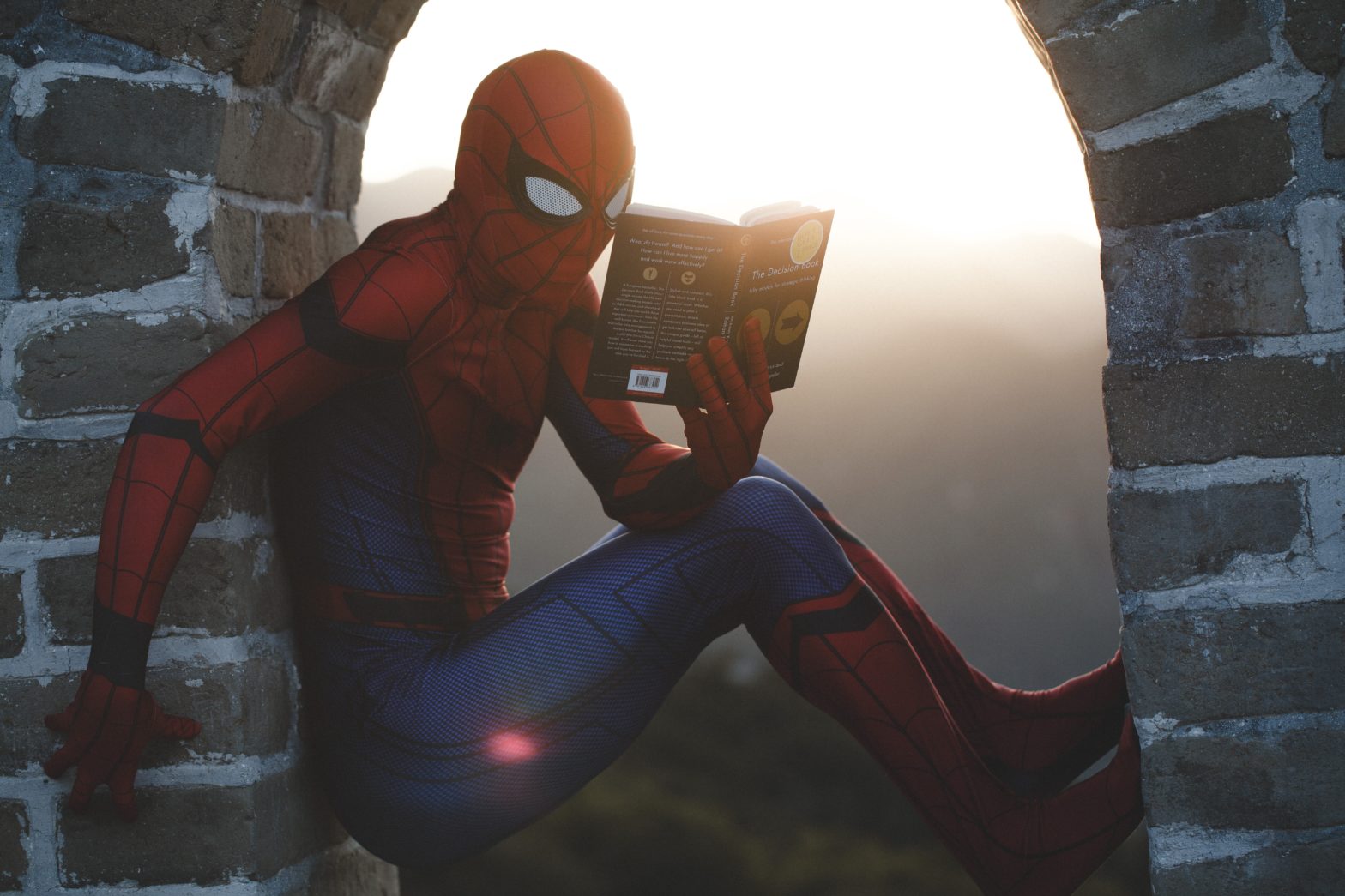In the last blog post, we discussed Miles Morales: Spider-Man by Jason Reynolds and gave a brief synopsis of the book. But what are some of the book’s main themes that you should know about, and what will be different if you decide to read the novel version and your friend chooses to read the graphic novel?
Themes
There are three main themes in Miles Morales: Spider-Man and they are the school-to-prison pipeline, racism, and coming of age. The school-to-prison pipeline is a term that refers to a larger set of rules and policies which place students of color into the criminal justice system. This theme can be seen in many different ways throughout the book. Still, it is most prevalent when Miles and his father visit his cousin Austin in jail and when Miles notices that many of his classmates who are people of color either go missing from school or are suspended in large numbers.
The next theme, racism, is also very prevalent in the book. Mr. Chamberlin, Miles’ history teacher, seems to embody racism. In his history classes, Mr. Chamberlin frequently lectures about the Civil War, where most of them are pro-slavery.

Finally, the last main theme is coming of age. Throughout the book, Miles not only has to deal with being Spiderman and taking down evil plots, but he also has to deal with the struggles of high school. Even if Miles goes through doubts, such as when he says to his roommate Ganke, “What good is it being a hero if I can’t even save myself?” (p.236), he ultimately learns more about himself, becomes the hero, and can save himself and others.
Novel vs. Graphic Novel
While the themes may not change that much depending on whether or not you read the novel or the graphic novel version of Miles Morales: Spider-Man, you should know some key differences.
- The novel has little to no mention of Spider-Man (Peter Parker).
- The graphic novel takes place in a world where Spider-Man (Peter Parker) has failed.
- The graphic novel has a more traditional “bad guy.”
- The novel has a “bad guy,” but he stands in for a larger theme: racism and the school-to-prison pipeline.
- The novel does not focus much on the action or physical things that Miles Morales as Spider-Man can do.
- The graphic novel focuses on what Miles Morales as Spider-Man can do physically or with his Spider-Man skills.
- The characters in both the novel and graphic novel seem to be the same.
Hopefully, whether you read the graphic novel or the novel, you can spot the significant themes, find other themes, and have meaningful discussions about their differences.
-Written by Nancy Gately

